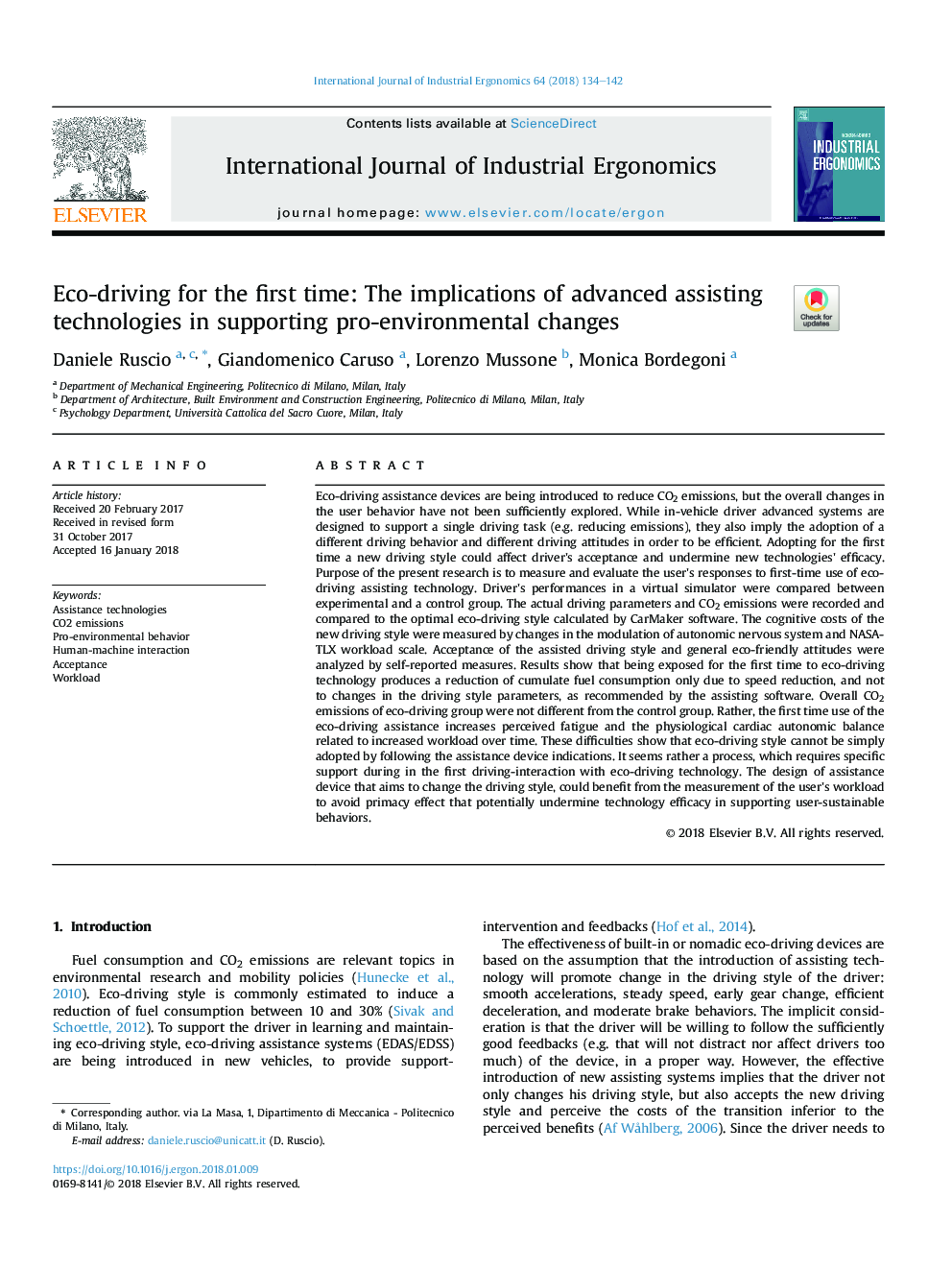| کد مقاله | کد نشریه | سال انتشار | مقاله انگلیسی | نسخه تمام متن |
|---|---|---|---|---|
| 7530454 | 1487411 | 2018 | 9 صفحه PDF | دانلود رایگان |
عنوان انگلیسی مقاله ISI
Eco-driving for the first time: The implications of advanced assisting technologies in supporting pro-environmental changes
ترجمه فارسی عنوان
رانندگی زیست محیطی برای اولین بار: پیامدهای فن آوری های پیشرفته کمک در حمایت از تغییرات محیط زیست
دانلود مقاله + سفارش ترجمه
دانلود مقاله ISI انگلیسی
رایگان برای ایرانیان
کلمات کلیدی
موضوعات مرتبط
مهندسی و علوم پایه
سایر رشته های مهندسی
مهندسی صنعتی و تولید
چکیده انگلیسی
Eco-driving assistance devices are being introduced to reduce CO2 emissions, but the overall changes in the user behavior have not been sufficiently explored. While in-vehicle driver advanced systems are designed to support a single driving task (e.g. reducing emissions), they also imply the adoption of a different driving behavior and different driving attitudes in order to be efficient. Adopting for the first time a new driving style could affect driver's acceptance and undermine new technologies' efficacy. Purpose of the present research is to measure and evaluate the user's responses to first-time use of eco-driving assisting technology. Driver's performances in a virtual simulator were compared between experimental and a control group. The actual driving parameters and CO2 emissions were recorded and compared to the optimal eco-driving style calculated by CarMaker software. The cognitive costs of the new driving style were measured by changes in the modulation of autonomic nervous system and NASA-TLX workload scale. Acceptance of the assisted driving style and general eco-friendly attitudes were analyzed by self-reported measures. Results show that being exposed for the first time to eco-driving technology produces a reduction of cumulate fuel consumption only due to speed reduction, and not to changes in the driving style parameters, as recommended by the assisting software. Overall CO2 emissions of eco-driving group were not different from the control group. Rather, the first time use of the eco-driving assistance increases perceived fatigue and the physiological cardiac autonomic balance related to increased workload over time. These difficulties show that eco-driving style cannot be simply adopted by following the assistance device indications. It seems rather a process, which requires specific support during in the first driving-interaction with eco-driving technology. The design of assistance device that aims to change the driving style, could benefit from the measurement of the user's workload to avoid primacy effect that potentially undermine technology efficacy in supporting user-sustainable behaviors.
ناشر
Database: Elsevier - ScienceDirect (ساینس دایرکت)
Journal: International Journal of Industrial Ergonomics - Volume 64, March 2018, Pages 134-142
Journal: International Journal of Industrial Ergonomics - Volume 64, March 2018, Pages 134-142
نویسندگان
Daniele Ruscio, Giandomenico Caruso, Lorenzo Mussone, Monica Bordegoni,
